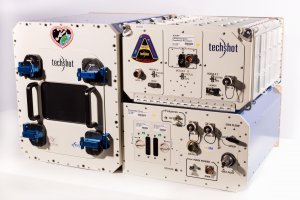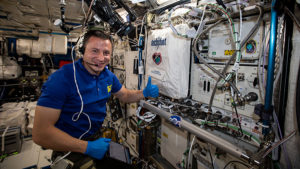Global crises can accelerate technology. Disrupting traditional responses with innovation can result in untapped opportunities that become crucial tools for humanity. This year, the Coronavirus pandemic could accelerate the evolution of drug and vaccine testing, as researchers are harnessing new technology to facilitate safety testing in people soon after preclinical work is completed on more than 60 emerging vaccine candidates. In the meantime, a bioengineering startup from South Korea could change the framework behind vaccine testing as we know it.
Founded in 2017, CLECELL has focused on the research and development of artificial tissue and has gone on to create a respiratory epithelium model earlier this year using its proprietary 3D bioprinter, the U-FAB, as well as other bioprinting technology. What is so interesting about this model is that it is expected to become a testbed for the severe acute respiratory syndrome coronavirus (SARS-Cov-2), as well as for research on the mechanisms of various other viruses.
According to a company statement, this is especially important since SARS-Cov-2 is markedly less infectious towards animals, so this new method is being considered as a potential alternative to more traditional ones that require the use of fertilized eggs to create vaccines. For more than 70 years, egg-based vaccine manufacturing has been used to make both inactivated (killed) vaccine (usually called the flu shot) and live attenuated (weakened) vaccine. Scientists would inject a fertilized egg with the virus, incubating it, and then extracting, diluting, and refining it into an antigen. Instead, CLECELL’s innovative bioprinting technique has the potential to become a testbed for various viruses.
Respiratory epithelium is a type of tissue found lining most of the respiratory tract, the role of this unique type of epithelium is to function as a barrier to pathogens and foreign particles; however, it also operates by preventing infection and tissue injury via the use of the mucociliary elevator.

The respiratory epithelium (Credit: Blausen.com staff, Medical gallery of Blausen Medical 2014, WikiJournal of Medicine)
In fact, the company’s respiratory epithelium model for in vitro testing was saught out by a team of researchers at Harvard University’s Medical School. CLECELL claims that on April 10, they received a formal letter of correspondence from Choi-Fong Cho, an assistant professor of neurosurgery at Harvard Medical School and instructor at Brigham and Women’s Hospital. The message centered around an urgent request for information on the respiratory epithelium model created with bioprinting technology.
According to the company, Cho, who is an expert in neurovascular research, the development of new drugs and neurovascular organoids, along with her research team are interested in methods to create a respiratory epithelium model through 3D bioprinting and has supposedly expressed that CLECELL’s solution will be of great assistance in conquering SARS-Cov-2.
CLECELL also suggests that Cho has professed a desire to research SARS-Cov-2’s effect on vascular structure, the virus’s infection routes, and creating an in vitro testing platform that mimics human lung tissue via CLECELL’s bioprinting solution.
Up until now, the high number of casualties from the COVID-19 pandemic has spiraled a frenetic interest in a cure, skyrocketing a profound interest from governments, research institutes, companies, and societies in drug and vaccine development, disease control, and all branches of healthcare. As a result, experts are seeking alternate methods of research that could bypass the limitations of contemporary and traditional methods for the creation of vaccines, that could take months.
CLECELL has plans to collaborate with researchers around the world to offer a testbed for the research of viruses and the development of cures, with plans to carry out research not only on virus infection, but also drug delivery, toxicity, and inflammation.
Furthermore, CLECELL claims that its proprietary 3D bioprinter, the U-FAB, is slated for tissue engineering research at the Boston Bioprinting Consortium, which is comprised of world-class scholars from Boston’s universities and hospitals and consists of eight joint-research teams.
“Despite the various existing methods of testing respiratory viruses in vitro, we require a more effective platform for testing,” indicated Young-Jae Cho, a professor at the Department of Pulmonology at Seoul National University Bundang Hospital. “The creation of precise artificial respiratory models through 3D bioprinting technology offers a potential alternative.”
The startup’s bioprinting technology could provide solutions for tissue engineers and life scientists to research and develop biomimetic human tissues and organs. Since its origin, the company has been researching and developing various reconstructed human skin models using scalable 3D bioprinting technology, focusing on building and implementing transplantable biomimetic human skin in the future.
Along with the U-FAB, the company has two other printing platforms: U-Printer for the development of artificial tissues and organs and U-Skin for reconstructing artificial human skin models. Through their U-Printer prototype, they have created artificial skin models, which they consider superior to the existing commercial ones as they are able to retain the shape and dimension without shrinking throughout the culture period and pigmentation, and this was realized by 3D bioprinting melanocytes without UV or chemical stimulation.
A need for hastening change has been at the center of many technological revolutions, and in these uncertain times, it seems imperative to rely on bioprinting technology that can accelerate results. CLECELL’s revolutionizing respiratory epithelium model could become a fundamental resource for vaccine testing. Never before have so many of the world’s researchers focused so urgently on a single topic. With so many minds mobilizing to understand the disease, this emerging powerful technology developed by the South Korean startup could reduce the time towards finding a cure for COVID-19.
The post CLECELL: A New Bioprinted Model Could Aid COVID-19 Vaccine Testing appeared first on 3DPrint.com | The Voice of 3D Printing / Additive Manufacturing.





